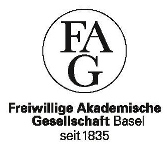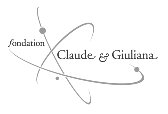Digitization Projects
The collection of the Kupferstichkabinett encompasses some 300,000 works on paper from the fifteenth century to the present, including drawings, watercolors, prints, illustrated books, and a relatively small number of photographs. Due to their sensitivity to light, these works can be exhibited only to a limited extent. Researchers, students, and the lay public may view the works in the Kupferstichkabinett’s study room or consult reproductions in publications, where available.
In a series of projects supported by third-party funding, we are continually working to produce digital reproductions of the works in the collection and publish them in our Collection Online. This tool facilitates access to the collection not only for researchers around the world, but also for the general public. We would like to use this opportunity to thank all the donors who have generously offered funding support for our projects.
The digitization of the collection has additional benefits: it helps us gain a better overview of the collection’s riches, allowing us to target our efforts to study the holdings; makes administrative processes easier; and produces digital reproductions that may be used for a range of purposes, which in turn helps publicize our holdings.
Current project
Digitization of the prints with accession dates between 1933 and 1942
In connection with the second provenance research project initiated with support from the Federal Office of Culture, which will be implemented at the Department of Prints and Drawings under the direction of Anita Haldemann between March 2021 and September 2022, generous support from the Sulger-Stiftung will enable us to digitize the ca. 2,000 prints that were gifted to or acquired for the collection between 1933 and 1942. Among the previous owners of the works that came to Basel during this period were collections and individuals in Switzerland, but also in other countries, a circumstance that underscores the need to study these holdings and publish the findings.
In a first phase of the project, between November 2020 and February 2021, the research associates Petra Barton and Lena Lehmann are laying the groundwork for the digitization of the works by compiling a new catalogue of the works in the database on the basis of the inventory books and filing cards.
In the project’s main phase, between March 2021 and October 2022, Petra Barton will examine the originals and revise the metadata. Maja Müller will assist her by scanning the works. By recording the objects in their present condition, this process will also yield a complete inventory of the holdings. The paper conservator Annegret Seger will prepare the works to allow for access to the versos when necessary or take other conservation measures.
Completed projects
Digitization of the drawings from the Amerbach Cabinet and other drawings by European Old Masters of the fifteenth through seventeenth centuries
3,067 drawings by Old Masters of the fifteenth through seventeenth centuries form the world-famous nucleus of the Kupferstichkabinett (Department of Prints and Drawings), whose history goes back to the collections of Basilius Amerbach and Remigius Faesch. Some bodies of work within this collection, such as the drawings by Hans Holbein the Younger and Urs Graf, have been subject to extensive research, while other parts of the collection remain unpublished.
In a project made possible by support from Helvetia Versicherungen and implemented between October 2017 and December 2020, our research associate Annika Baer compiled a complete new catalogue of this collection and produced digital reproductions of all works. Our curator Ariane Mensger contributed art-historical expertise. Sonia Fontana and, toward the end of the project phase, Maja Müller performed the scanning process. The project was overseen by Anita Haldemann, head of the Kupferstichkabinett. All works are accessible through our Collection Online, where the images may be downloaded.
Digitization of the drawings with accession dates between 1933 and 1945
Between October 2019 and July 2020, we produced a new catalogue and digital reproductions of the ca. 2,500 drawings that entered the collection between 1933 and 1945. These works are part of the scope of a provenance research project sponsored by the Federal Office of Culture (BAK), which aims to establish the complete provenance history of each work. To make the holdings accessible to the researchers, the research associates Milena Oehy and, after November 2019, Petra Barton catalogued the drawings in the research database. Sonia Fontana produced the digital reproductions using a scanner. The project was overseen by Anita Haldemann, head of the Kupferstichkabinett. This large-scale digitization project was made possible by generous funding support from the Karl und Sophie Binding Stiftung.





